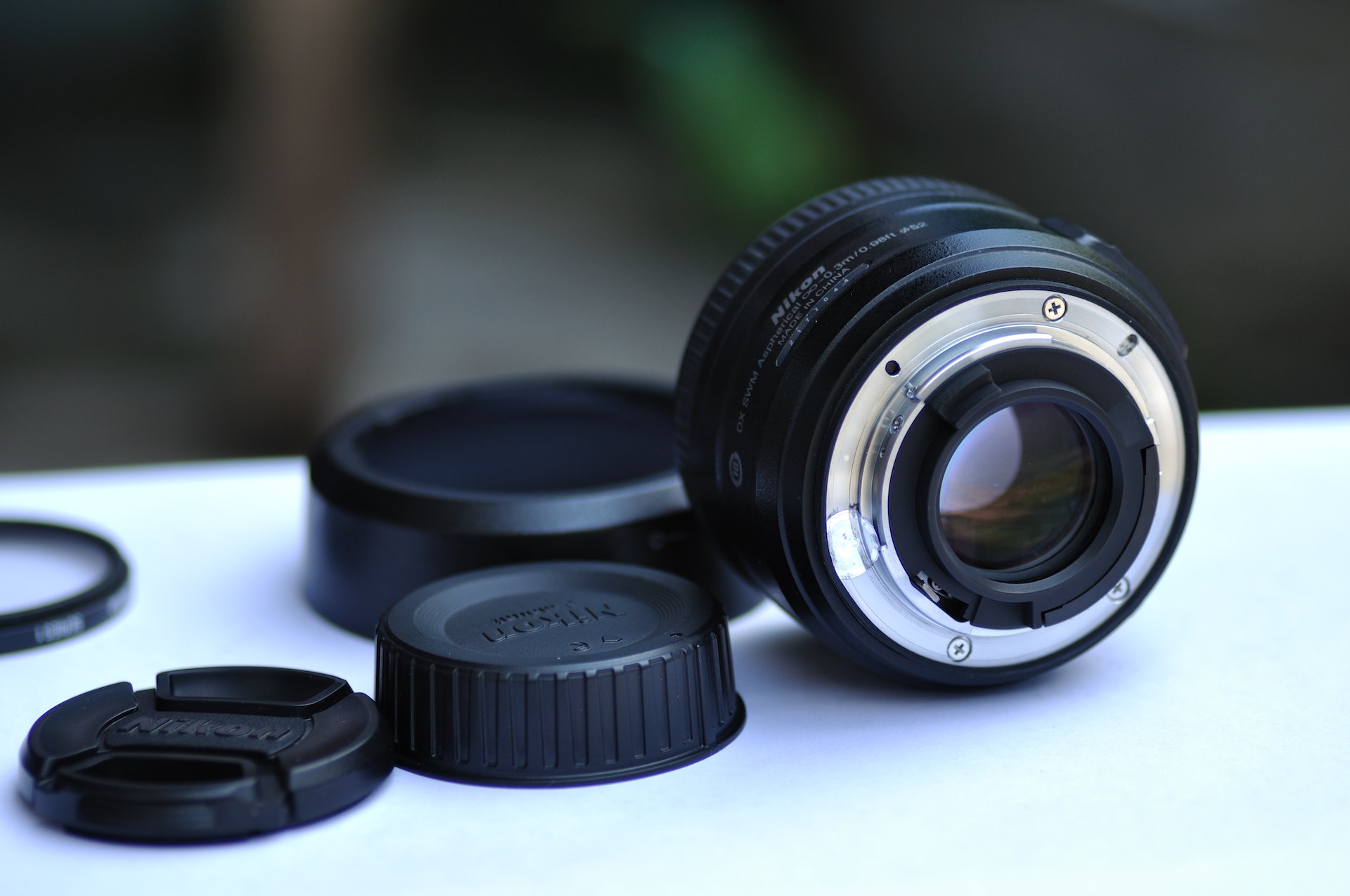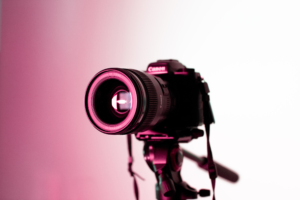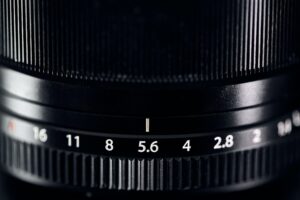Do camera lenses wear out? Yes, they can. Just as with any piece of technology or equipment, camera lenses have a lifespan influenced by various factors.
However, understanding the nuances of camera lens longevity and what impacts it can make a significant difference in how you care for and use your equipment.
Dive into this article to explore the intricate aspects of lens wear, factors that influence their lifespan, and the differences between professional and consumer-grade lenses.
Wondering about lens compatibility? Discover if camera lenses are universal.
Camera Lens Lifespan: The Reality
How Long Do Camera Lenses Typically Last?
Camera lenses, like the eyes they’re often compared to, are complex instruments. Their lifespan isn’t a one-size-fits-all answer but rather depends on several factors:
- Usage: Lenses that are used more frequently, especially in challenging conditions like the desert or rainforest, might show signs of wear sooner. If you want to learn more about the affect water can have on your camera lens, check out our full guide here.
- Maintenance: Regular cleaning and care can significantly prolong the life of a lens. If you’re wondering about additional protection for your lenses, check out if lens filters are necessary for your photography journey.
- Build Quality: Not all lenses are made equal. Some are designed with materials that are more durable and resistant to wear.
- Handling: Lenses that are frequently dropped, bumped, or stored improperly can wear out faster.
Moreover, the type of lens in question plays a role.
Professional-grade lenses are often built with sturdier materials and are designed to withstand the rigors of daily use by professionals.
They might be water and dust-resistant, and their optical elements might be crafted with precision to resist wear for longer.
On the other hand, consumer-grade lenses are typically lighter and might not be as robust.
That doesn’t mean they won’t last long, but they might not have the same durability as a lens designed for professional use.
In essence, while a well-maintained professional lens can last decades, a consumer lens might start showing signs of wear in a shorter period, depending on its use and care.
Do Lenses Expire or Degrade Over Time?
The term “expiry” is generally associated with perishables, but when it comes to camera lenses, it’s more about degradation than a fixed expiration date.
Yes, camera lenses can degrade over time, and various factors influence this degradation.
Effects of Infrequent Use
Paradoxically, letting your lens sit idle for extended periods can be as detrimental as overusing it.
Here’s how infrequent use affects lenses:
- Lubrication Issues: The internal mechanisms of a lens, such as the focus or zoom rings, rely on certain lubricants. Extended periods of inactivity might cause these lubricants to dry up or congeal, leading to sticky or hard-to-move parts.
- Fungus Growth: Lenses stored in dark, humid environments become prime real estate for fungal growth. This fungal presence can etch the glass elements, affecting image quality and clarity.
- Seal Deterioration: The rubber seals and gaskets that offer some level of environmental protection can become brittle and less effective if not exposed to the natural flexing that occurs during regular use.
Impact of External Conditions
Our environment constantly challenges the robustness of camera lenses:
- UV Exposure: Prolonged exposure to direct sunlight and UV rays can deteriorate the lens coatings. These coatings are essential for reducing glare, flares, and ensuring color accuracy. While the actual glass isn’t largely affected, the quality of the images might suffer.
- Humidity: High humidity levels can lead to internal condensation, especially when moving between extreme temperature differences. This not only facilitates fungal growth but can also affect internal electronics.
- Dust and Particulates: Dust might seem harmless, but when it infiltrates a lens, it can scratch internal elements or interfere with the lens’s moving parts. Dust can also become a visible annoyance in your photos, especially when shooting at smaller apertures.
While lenses don’t “expire” like a carton of milk, they certainly can degrade due to various factors.
Both prolonged inactivity and external environmental challenges can compromise the performance and longevity of your lens.
To combat these issues, regular use, combined with mindful storage and maintenance, is crucial.
Detecting Lens Wear and Damage
How Can I Tell if My Camera Lens is Worn Out or Damaged?
Like any tool that sees frequent use, camera lenses will show signs of wear and tear over time.
Recognizing these signs early on can save you from unexpected surprises during a crucial shoot.
1. Visible Signs
- Dark Spots: If your images have consistent dark spots in the same locations, it might indicate dust or dirt on the lens or sensor. Persistent spots, even after cleaning, might hint at deeper lens issues.
- Scratches: These can manifest as unusual flares or artifacts in your images. While minor surface scratches might not significantly affect image quality, deeper ones can.
- Cracks: If you notice a crack, it’s a definitive sign of damage. Cracked lenses can compromise image clarity and should be addressed immediately.
2. Functional Issues
- Focusing Problems: If the lens struggles to find focus, frequently “hunts”, or cannot focus at all, internal mechanisms might be compromised.
- Zooming Glitches: Difficulty in smoothly zooming in or out, or a zoom mechanism that’s stuck, indicates wear or damage.
- Faulty Autofocus: If autofocus becomes slow, erratic, or completely non-functional, it’s a clear sign of wear or potential damage.
3. Signs Specific to Used Lenses:
- Fungus: This appears as web-like structures inside the lens. It can significantly degrade image quality and indicates the lens was stored in a humid environment.
- Damaged Threads: If the filter threads are damaged, you might struggle to attach or detach filters.
- Worn Rubber Parts: Zoom and focus rings might lose their grip, affecting usability.
- Discoloration: Any yellowing or unusual coloration of the lens elements can hint at prolonged exposure to certain conditions or the degradation of coatings.
The Impact of Build Quality, Usage, and Maintenance on Lifespan
To truly understand why a lens wears out or gets damaged, it’s essential to consider three crucial factors:
1. Build Quality:
- Manufacturing: Precision-manufactured lenses with tight quality control standards tend to last longer.
- Material Quality: Lenses built with premium materials, like metal barrels and high-quality glass, will naturally outlive their cheaper counterparts.
2. Usage Patterns:
- Frequency: A lens that’s heavily used daily in rugged conditions will show signs of wear sooner than a lens used occasionally in a controlled environment.
- Type of Use: Lenses used in extreme weather conditions, action photography, or situations with a higher risk of bumps and drops might degrade faster.
3. Maintenance Habits:
- Routine Care: Regularly cleaning your lens, checking for signs of wear, and ensuring it’s stored properly can substantially increase its lifespan.
- Preventive Measures: Using protective filters, lens hoods, and storing the lens with desiccants can prevent many common lens issues.
Preserving Your Camera Lens: Best Practices
The life of your camera lens is largely determined by how you treat it. By establishing protective habits and routine maintenance, you can ensure its longevity.
How Can I Prolong the Life of My Camera Lens?
1. Protective Habits:
- Using Lens Caps: Always place the cap on your lens when not in use. This simple action can protect your lens from dust, smudges, and unexpected impacts.
- Proper Storage: Use a padded camera bag to protect your lens from bumps and jolts. Always place your lens with the mount facing downwards to prevent dust accumulation.
- Avoiding Extreme Conditions: Don’t expose your lens to direct sunlight for extended periods. Similarly, try to avoid extreme cold or humidity, which can cause internal condensation or damage electronics.
Also, consider reading about the necessity of camera lens protectors.
2. Maintenance:
- Regular Cleaning: Using a microfiber cloth, wipe away dust, fingerprints, and smudges. It’s a gentle way to ensure clear shots and prevent potential damage.
- Checking Lens Parts: Periodically check the zoom and focus rings, and look for any visible wear on the lens body or rubber parts.
3. Proper Storage:
When not in use, your lens should be stored in a cool, dry place. A few tips include:
- Use silica gel packets in your camera bag to prevent humidity-related issues.
- Avoid storing lenses in attics or basements, where temperatures can fluctuate widely.
- Keep them away from corrosive materials, like chemicals or saltwater.
| Storage Element | Purpose |
|---|---|
| Padded Camera Bag | Protection against impacts |
| Silica Gel Packets | Humidity control |
| Lens Caps | Dust and smudge protection |
| Microfiber Cloth | Gentle cleaning |
The World of Second-hand Lenses: A Deep Dive
In the photography world, buying used equipment can be a budget-friendly way to access high-quality gear. But, is it always a good idea?
Benefits of Buying Second-Hand Lenses:
- Cost Savings: You can often find high-quality lenses for a fraction of their original price.
- Access to Discontinued Models: Some older lens models have unique characteristics that photographers value. Buying second-hand might be the only way to acquire them.
Risks of Buying Second-Hand Lenses:
- Potential for Hidden Damage: While a lens might look pristine externally, internal elements might be compromised.
- Limited or No Warranty: Many used lenses come without the safety net of a manufacturer’s warranty.
Detailed Checklist for Inspecting a Used Lens:
- Examine the Coatings: Look for any scratches, smudges, or fading on the lens coatings.
- Check Autofocus: Ensure that the autofocus mechanism works smoothly and accurately.
- Inspect the Glass: Look for any scratches, fungus, or internal dust.
- Zoom Ring and Focus Ring: Ensure they move smoothly without any hitches.
- Aperture Blades: Check for oiliness, which can be a sign of internal problems.
- Lens Contacts: These should be clean and free of corrosion.
- Exterior and Rubber Parts: Check for excessive wear or deterioration.
| Checklist Element | Purpose |
|---|---|
| Coatings | Clarity and protection against reflections |
| Autofocus | Accurate and fast focusing |
| Glass Inspection | Clear, undamaged optics |
| Rings | Smooth operation |
| Aperture Blades | Proper light control |
| Contacts | Clean electronic connections |
| Exterior | Durability and grip |
While buying used lenses can offer incredible value, it’s essential to approach the purchase with an informed perspective. Proper inspection and understanding the potential risks can lead to great deals without unwanted surprises.
How Can I Test My Camera Lens Without a Camera?
Even without a camera, it’s possible to evaluate a lens’s condition. Whether you’re buying a used lens or simply ensuring your current one is in good shape, certain techniques and tools can offer insights into its health.
Tools, Techniques, and Important Considerations for Assessing a Lens’s Health
1. Visual Inspection:
- Hold the Lens Up to a Light Source: This will highlight any dust, scratches, or fungus inside the lens. It’s normal to see some tiny dust specks, but larger particles or cloudiness can indicate problems.
- Examine the Exterior: Look for dents, scratches, or signs of heavy wear, especially on the lens mount and contacts.
2. Tactile Test:
- Rotate the Focus and Zoom Rings: These should move smoothly without any sticking or grinding.
- Shake the Lens Gently: Listen for any rattling or loose parts, indicating internal issues.
3. Aperture Blade Check:
- Manually open and close the aperture (if the lens permits) to ensure the blades move smoothly and uniformly.
4. Use a Magnifying Glass:
- Enhance your visual inspection by using a magnifying glass, especially useful for spotting small scratches or other defects.
Key Considerations:
- Always handle lenses with clean hands.
- Remember, even a lens in perfect condition can perform poorly if not compatible with a given camera.
When Your Lens Goes Bad: Next Steps
It’s a dreaded realization for any photographer: a favorite lens showing signs of malfunction or wear. However, not all is lost; often, you have options.
How Do I Replace or Repair My Lens?
1. Cost and Feasibility Evaluation:
- Repair: Some minor issues, like sticky focus rings or cosmetic damage, might be fixable. Consult a professional to get a quote and assess whether repair is worthwhile.
- Replacement: If repairs are too costly or the lens is severely damaged, consider replacing it. Sometimes, newer models offer improved features, making an upgrade attractive.
2. Using Older Lenses with Newer Camera Models:
- With the advent of adaptors, many old lenses can be used on newer camera bodies. While you might lose some functionalities, such as autofocus, the unique characteristics of vintage lenses can provide distinct aesthetic value.
Key Considerations:
- Weigh the repair cost against the lens’s value and the price of a replacement.
- Understand potential compatibility issues when adapting old lenses to newer cameras.
If you’re looking into repairs, learn how to fix a camera lens and whether its possible for the type of damage your lens has.
FAQs
Does camera lens degrade over time?
Yes, camera lenses can degrade over time, especially if exposed to elements like dust, moisture, and UV light, or if not stored properly.
How do I know if my camera lens is bad?
Signs of a bad lens include visible scratches, dark spots, focusing issues, or unusual sounds when zooming or focusing.
How long will a Canon lens last?
A Canon lens, with proper care, can last many years. Professional-grade lenses often have a longer lifespan than consumer-grade lenses.
Do camera lenses need maintenance?
Yes, regular cleaning and occasional checks for issues like fungus or loose elements can help prolong a lens’s life.
What is the lifespan of a camera lens?
The lifespan varies based on usage, care, and build quality, but with proper maintenance, many lenses can last a decade or more.
Conclusion
Your camera lens is more than just a tool; it’s a vessel through which you capture memories, tell stories, and express your creativity.
Ensuring its longevity requires proactive care, recognizing early signs of wear, and understanding when to repair, replace, or explore the world of used lenses.
By being informed and vigilant, you can ensure that your lens serves you well for years to come.



![Read more about the article Should I Buy Used Camera Lenses? Insights, Advice & Recommendations [2023]](https://photographyexplorer.com/wp-content/uploads/2023/08/Should-I-Buy-Used-Camera-Lenses-300x200.jpg)



![Read more about the article How to Store Camera Lenses Properly for Longevity and Performance [2023]](https://photographyexplorer.com/wp-content/uploads/2023/08/How-to-Store-Camera-Lenses-Properly-300x200.jpg)

Pingback: Lens Care 101: How Do You Clean a Camera Lens? [2023] - Photography Explorer